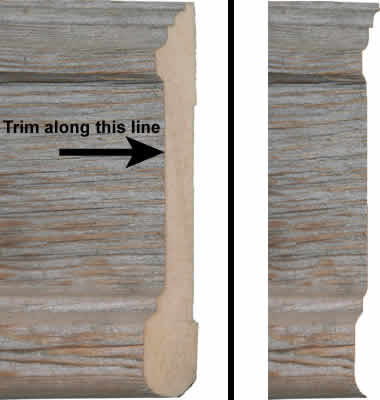How To Cope Moulding for a Better Joint
When installing molding into an inside corner,
many people just cut the two pieces with a 45° angle and then fasten
the pieces into the corner. The problem with this is that the joint tends
to open up over time. It isn't a big deal, but it looks sloppy. Also,
most corners aren't precisely 90°, so unless you take the time to
measure the angle and then split it evenly between the two pieces, it
isn't go to look good either. Even then, the joint will still open up.
The better approach is to use coped joints. That is where the end on
one piece is cut to precisely match the profile of the other section
of molding. It sounds complicated, but it is easy, if you know the
trick. The results look professional and the joint isn't going to open
up later. You will need a coping saw; a special saw with a very fine
blade. Don't worry, you can buy one for less than ten dollars and they are worth the small investment.
The first piece of molding is cut to the full length to fit the wall
(or whatever) and cut with a regular 90° cross cut and then installed.
The trick comes with the piece being coped, cut the end with a 45° angle,
just as though you were going to do a simple joint. Now if you look at
the piece of moulding, you will see the cut line on the face (see the
photo). Use the coping saw to cut along the line and you will be left
with a near perfect mate to the face of installed molding.

When making the cut, it helps to back-cut the profile, that is, instead
of cutting at a 90° angle to the face, cut at about 91° or 92°.
This allows you to snug the piece into the profile of the matching moulding
and minimize any joint line.
One thing to consider when choosing which piece to be coped is people's
view of the joint. If people will view the joint from one angle more
than another, the less viewed piece should be one coped. The reason being,
if you do less than a perfect job on the cut, it will be less visible.
Another consideration, if you will cope both ends of a piece, cut it
to length with 45° angles on both ends, so that it fits snugly in place. When you cope the ends,
cutting right on the line should yield a piece that pieces nicely between
the installed moulding. |
|

|

